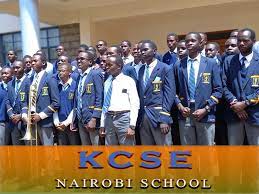Alleged 2022 KCSE Exam Malpractices.
Summary of the report by the Departmental Committee on Education.
COMMITTEE OBSERVATIONS AND FINDINGS
The Committee after analysing submissions made by different stakeholders arrived at the following observations and findings;
THAT;
🛡️There were isolated cases of examination irregularities reported during the 2022
KCSE Examination. For example, early exposure of afternoon examination papers,
mobile phones seized from some examination centers, some students found with unauthorized written-on materials among others..
🛡️Candidates who are hospitalized, or have recently given birth are compelled to sit for the examinations from their hospital beds.
🛡️KCSE being a high-stake examination which is used to place candidates to various
courses in the university, it prompts some students to engage in exam malpractices
so as to meet the high expectations from parents, teachers and society at large.
🛡️Examiners, invigilators and supervisors are poorly remunerated and the payment delayed hence demotivating them.
🛡️Marking centres are centralized within Nairobi and its environs only, resulting in
overcrowding and deplorable conditions in accommodation for the markers.
🛡️Telegram and Signal were the preferred social media platforms used in perpetrating
examination malpractices because the source of the information is not traceable.
🛡️Two examination papers are done in a day, with one conducted in the morning session
and the other in the afternoon. Early exposure incidents tend to predominantly occur
in the afternoon paper. This is primarily due to the fact that both examination papers
are collected by the Centre Managers in the morning, leaving the afternoon paper
more vulnerable to potential breaches.
🛡️There were several examination malpractices in the 2022 KCSE as indicated by the
Office of the Director of Criminal Investigations (DCI). The DCI handled a total of 68 cases with 44 cases pending under investigation, 17 cases pending before court,
one case with a warrant of arrest issued and six cases already finalized.
🛡️Some principals visit the Sub-County Directors of Education with proposals on their desired supervisors. This is propelled by the need for higher mean grades and promotions.
🛡️Parents and Boards of Management mount pressure on school principals to register
high mean grades or risk being transferred resorting to exam malpractices.
🛡️Some schools levy motivational fees on parents to pay examiners, bribe invigilators,
security officers, supervisors, MoE and KNEC officials in what is commonly referred
to as ‘fuel’ to facilitate exam malpractice.
🛡️The Multi-Agency Approach involving the Ministry of Interior and National Administration, the DCI and the Communications Authority of Kenya (CAK) in the
management of examination was not effective in curbing examination malpractices as intended.
🛡️The Committee found out that KNEC was overwhelmed due to the administration
and management of three national examinations (2022 KPSEA, KCPE and KCSE) in a span of just one month.
🛡️The finances allocated to KNEC are inadequate making effective examination
management and monitoring difficult to achieve due to increase in the number of
candidates.
🛡️There was no adherence to KNEC’s examinations guidelines and regulations. For
example, a candidate involved in any form of malpractice is not allowed to continue
with the next examination but the committee found that some candidates continued uninterrupted in contravention of the regulation.
🛡️There is a lot of pressure on markers to complete their work on time. Marking starts at 4.00am to 10:00pm leading to exhaustion that compromises the process of
marking.
🛡️Reporting incidences of examination malpractices is bureaucratic and cumbersome
to examiners. The burden of proof is left to the examiners discouraging many of them from reporting.
🛡️Monitoring of examinations by KNEC officials was found to be poor because they
concentrate on schools along major highways and towns leaving schools in far flung areas not monitored.
🛡️KNEC is underfunded which negatively affects the effective administration of the
National Examinations. The underfunding is majorly as a result of the government
policy on examination waiver for the national examinations for all candidates both in
public and private schools which was introduced in 2015.
🛡️This policy shift made it impossible for KNEC to charge examinations fees which previously formed part of its internal income (AIA) which enabled it to fund its operations, including examination administration. The underfunding situation is also
exacerbated by a staggered model of issuance of examination grants by the exchequer, the non-revision of the examination fees which has remained static since 2013 despite the high cost of examination administration as well as an increase in
examination candidature due to the 100% policy.
🛡️There are several emerging issues related to technology and communication, such as social media platforms that affect examination management. There are, however, no
legislations in place to curb their misuse in perpetrating examination malpractices.
🛡️The penalties provided under the KNEC Act are not punitive enough to serve as a deterrence against examination malpractices.
_____
Recommendations
🛡️ Promotions of teachers not to be pegged on individual Schools’ performance only .
🛡️Knec to deploy Centre Managers to oversee exams in schools outside their Sub Counties
🛡️Knec to ensure Contracted professionals do not serve in the same School for more than 2 consecutive years.
🛡️CCTv Cameras to be installed at all Exam Centres
🛡️Knec to get more budgetary allocation in order to ensure the process is smooth.
🛡️ Knec to closely collaborate with other agencies like security personnel.
🛡️Knec to set supplementary exams for candidates who fail to sit for the tests like the hospitalized, pregnant.




